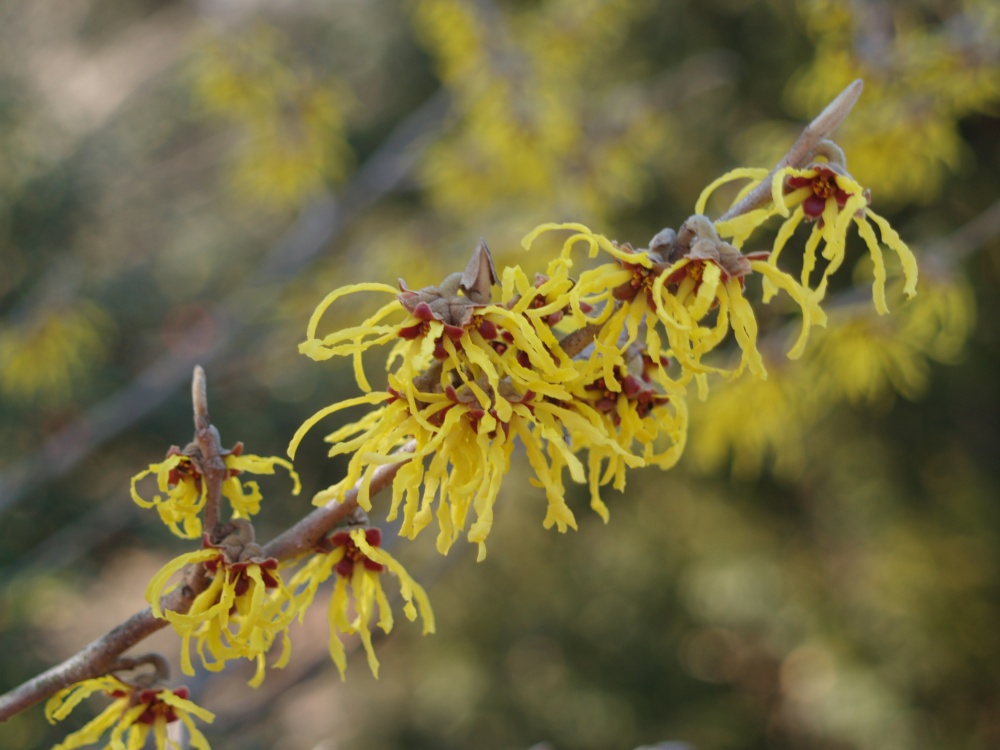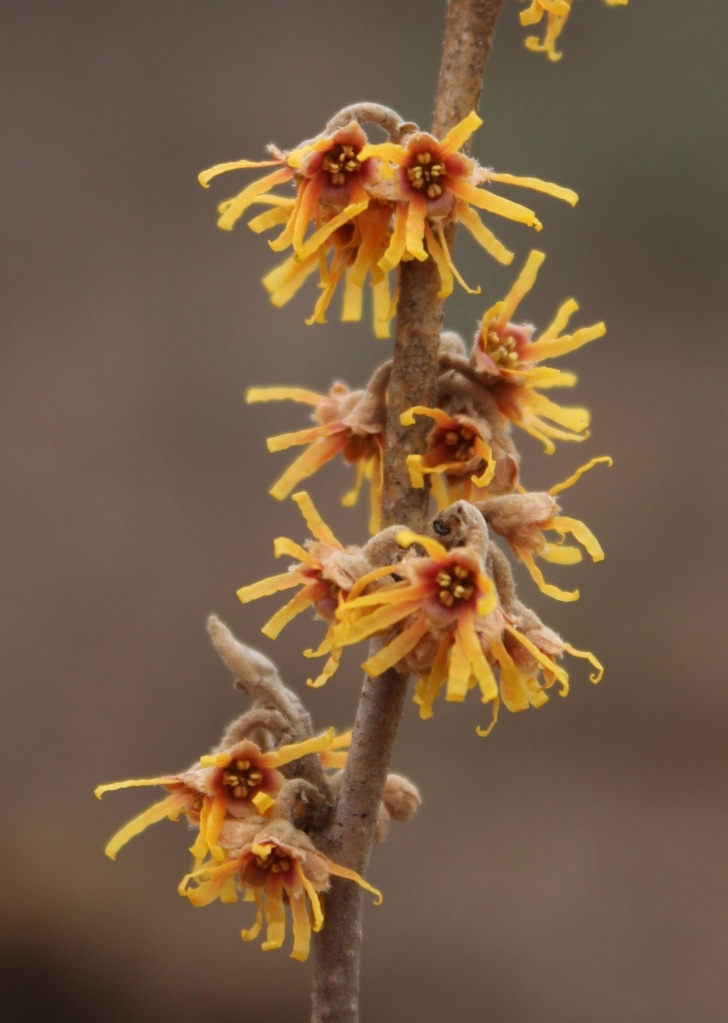I’ve told the story before (and will again), always with profound disappointment, that a mature ‘Arnold Promise’ witch hazel (Hamamelis x intermedia ‘Arnold Promise’, below) faded and finally succumbed in an area of the rear garden that gradually became too damp. The loss of dear and long established plants is always tragic, but this witch hazel particularly so as it brightened many dreary winter days.

A much smaller replacement has been planted (only four feet tall, the other was triple that), still a few years from making much of a show, but with flowers that make the long winter slightly more bearable. A drier location promises a longer life for this witch hazel, and for ‘Diane’ (below) and ‘Jelena’ witch hazels that were planted following Arnold’s demise.

In recent years, a Vernal witch hazel (Hamamelis vernalis, below) has grown to maturity (twelve feet, maybe taller), along with two others (much smaller) planted in shade that delays, but seemingly does not detract from flowering in January. The three witch hazels, purchased separately over several years, were all mistakenly labeled as the eastern native Common witch hazel (Hamamelis virginiana). The appearance of common and vernal witch hazels is not significantly different, though common flowers in November and vernal in January, so there is little trouble telling one from the other.

In fact, I do not regret the error. Vernal witch hazel is an exceptional shrubby tree for the winter garden, and one of the few fragrances that my handicapped sense of smell can detect on a still and sunny winter afternoon. I would happily give it another try to plant a common witch hazel, and several more of the hybrids, if only there was space. I wonder how any gardener can survive the winter without one or the other.
I live in Utah. Where would I find a Witch Hazel to plant? I don’t remember seeing it at any of the local garden centers.
Most of the hybrid witch hazels are cold hardy to 20 below, so that should fit most of the state. I don’t believe that witch hazels are very popular anywhere since they flower too early to put on much of a show when customers start coming into the garden centers in the spring. It wouldn’t surprise me if garden centers stock a few, but that they don’t stand out after the flowers fade. The best value will be to get one from a local garden center, but there are a number of internet sources available for mail order.
Thank you for the information. I’ll investigate that. Thank you very much.
I’ve never planted witch hazel Dave but I love its clean, cooling properties as an antiseptic wash…I’ll have to look into planting one. Anyway, lovely pictures as always! Thank you.
Many people don’t care for winter flowers since they’re not going outdoors any more than necessary when it’s cold. Witch hazels grow large enough that they are most appropriate for planting along the edges or the back of the garden, and not beside the front door, so they require a bit of effort to get out into the garden to enjoy the flowers.
The common Hamamelis virginiana is available as those small cuttings or seedlings from the Arbor Day Foundation. That is where I got mine.